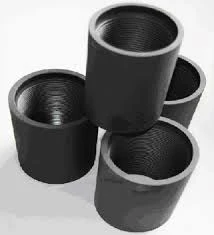- Afrikaans
- Albanian
- Amharic
- Arabic
- Armenian
- Azerbaijani
- Basque
- Belarusian
- Bengali
- Bosnian
- Bulgarian
- Catalan
- Cebuano
- Corsican
- Croatian
- Czech
- Danish
- Dutch
- English
- Esperanto
- Estonian
- Finnish
- French
- Frisian
- Galician
- Georgian
- German
- Greek
- Gujarati
- Haitian Creole
- hausa
- hawaiian
- Hebrew
- Hindi
- Miao
- Hungarian
- Icelandic
- igbo
- Indonesian
- irish
- Italian
- Japanese
- Javanese
- Kannada
- kazakh
- Khmer
- Rwandese
- Korean
- Kurdish
- Kyrgyz
- Lao
- Latin
- Latvian
- Lithuanian
- Luxembourgish
- Macedonian
- Malgashi
- Malay
- Malayalam
- Maltese
- Maori
- Marathi
- Mongolian
- Myanmar
- Nepali
- Norwegian
- Norwegian
- Occitan
- Pashto
- Persian
- Polish
- Portuguese
- Punjabi
- Romanian
- Russian
- Samoan
- Scottish Gaelic
- Serbian
- Sesotho
- Shona
- Sindhi
- Sinhala
- Slovak
- Slovenian
- Somali
- Spanish
- Sundanese
- Swahili
- Swedish
- Tagalog
- Tajik
- Tamil
- Tatar
- Telugu
- Thai
- Turkish
- Turkmen
- Ukrainian
- Urdu
- Uighur
- Uzbek
- Vietnamese
- Welsh
- Bantu
- Yiddish
- Yoruba
- Zulu
coupling for tubing
Understanding Coupling for Tubing An Essential Component in Oil and Gas Operations
In the oil and gas industry, the extraction and transportation of hydrocarbons require robust and efficient systems. One fundamental component in these systems is the coupling for tubing. Couplings are mechanical devices that join two piping sections together, ensuring the safe and efficient transport of fluids and gases. This article delves into the significance of couplings in the context of tubing, particularly in the oil and gas sector.
What is Tubing?
Before we explore the role of couplings, it’s essential to understand what tubing is. Tubing, in this context, refers to the pipes or pipes-like structures used to transport fluids from one point to another within a well or through the production system. It is designed to withstand internal pressures and is usually constructed from materials that provide strength, durability, and resistance to corrosion. Tubing is a critical component of well completions and production systems, enabling the movement of oil, gas, water, and other fluids.
The Role of Couplings in Tubing
Couplings serve a pivotal role in connecting sections of tubing, allowing for flexibility and adaptability in various installation scenarios. These components are designed to endure high-pressure environments and the harsh conditions often encountered in oil and gas operations. The primary functions of couplings include
1. Joining Tubing Sections As drilling operations can reach significant depths, it is common to require multiple lengths of tubing. Couplings provide a secure connection between these sections, ensuring a continuous flow path.
2. Facilitating Installation and Maintenance Couplings allow for easier installation and removal of tubing. In the event of maintenance or repair, sections of tubing can be detached and replaced without needing to remove the entire system.
3. Accommodating Thermal Expansion In subsurface environments, temperature variations can be significant. Couplings are designed to handle the thermal expansion and contraction of tubing, preventing stress and potential failures.
4. Sealing and Preventing Leaks A proper coupling ensures that the joint between tubing sections is sealed tightly, preventing leaks that could result in environmental hazards and financial loss.
coupling for tubing

Types of Couplings for Tubing
There are several types of couplings used in tubing applications, and their selection depends on various factors such as the type of fluid being transported, pressure requirements, and environmental conditions. Some common types include
1. Threaded Couplings These couplings feature threads that allow for a secure mechanical connection between tubing sections. They are easy to install and are often used in low-pressure applications.
2. Welded Couplings In high-pressure systems, welded couplings are preferred due to their strength and leak-proof seals. The tubing sections are welded together, creating a permanent connection.
3. Flanged Couplings These couplings involve flanges that are bolted together, providing a robust connection that can be easily disassembled for maintenance.
4. Compression Couplings These are used for joining sections of tubing without requiring welding or threading. They employ a compression mechanism to create a tight seal.
Quality and Standards
The quality of couplings is paramount in ensuring safety and effectiveness in tubing applications. They must meet rigorous industry standards and certifications, such as those set by the American Petroleum Institute (API) and the International Organization for Standardization (ISO). Choosing couplings from reputable manufacturers that adhere to these standards is crucial for the integrity of the entire system.
Conclusion
Couplings for tubing play a vital role in the oil and gas industry, enabling the safe and efficient transport of hydrocarbons. They provide the necessary connections between tubing sections, facilitating installation, maintenance, and adaptability to varying environmental conditions. With different types of couplings available, it’s essential for operators to select the appropriate type based on their specific operational requirements. By prioritizing quality and adhering to industry standards, companies can ensure the longevity and reliability of their tubing systems, ultimately enhancing their operational efficiency and safety. As the oil and gas industry continues to evolve, the importance of reliable coupling solutions remains a key element in future developments.
-
Tubing Pup Joints: Essential Components for Oil and Gas OperationsNewsJul.10,2025
-
Pup Joints: Essential Components for Reliable Drilling OperationsNewsJul.10,2025
-
Pipe Couplings: Connecting Your World EfficientlyNewsJul.10,2025
-
Mastering Oilfield Operations with Quality Tubing and CasingNewsJul.10,2025
-
High-Quality Casing Couplings for Every NeedNewsJul.10,2025
-
Boost Your Drilling Efficiency with Premium Crossover Tools & Seating NipplesNewsJul.10,2025







